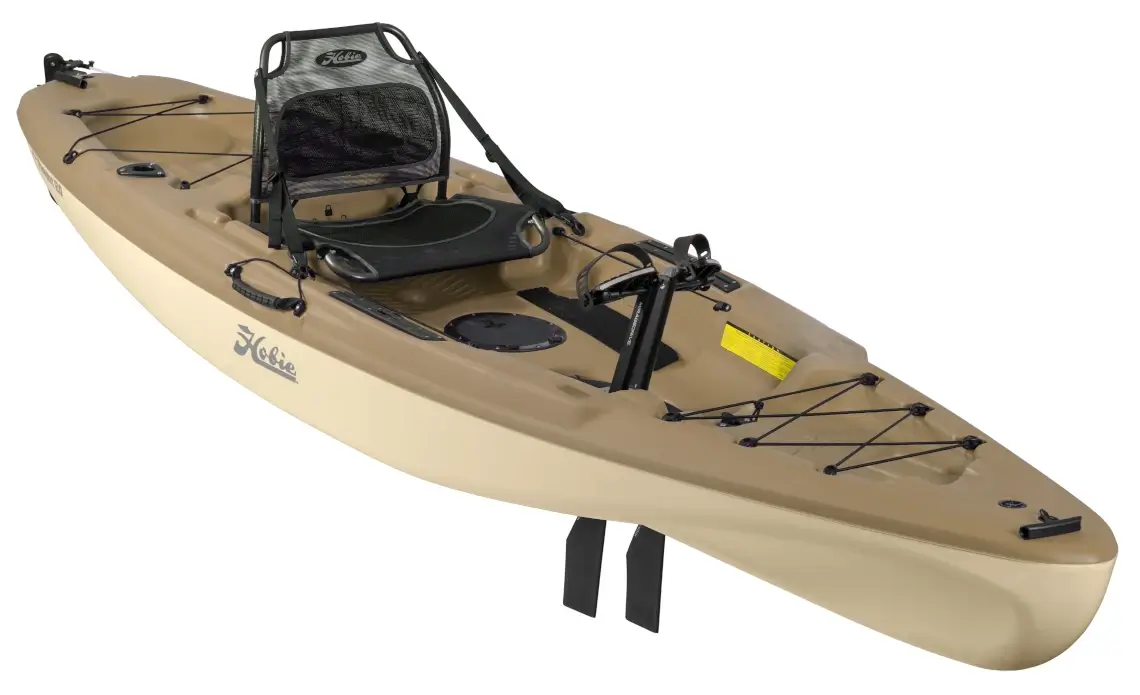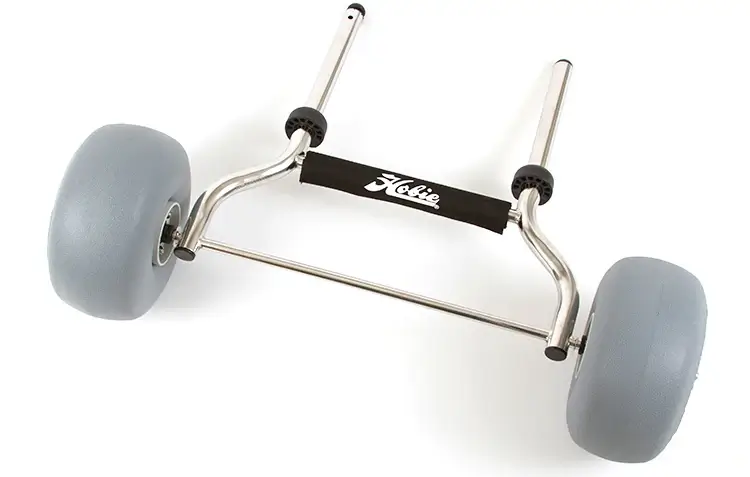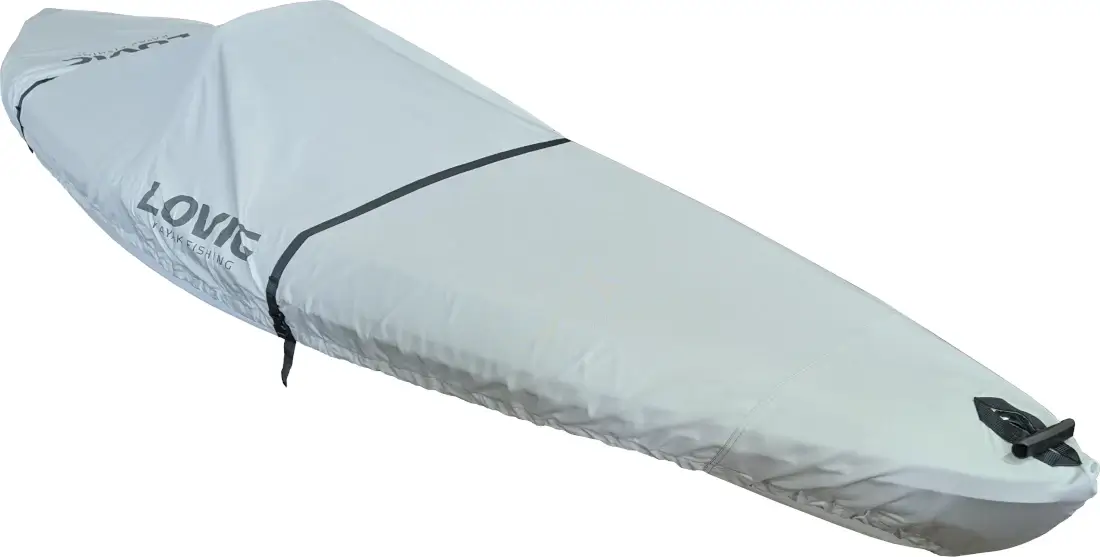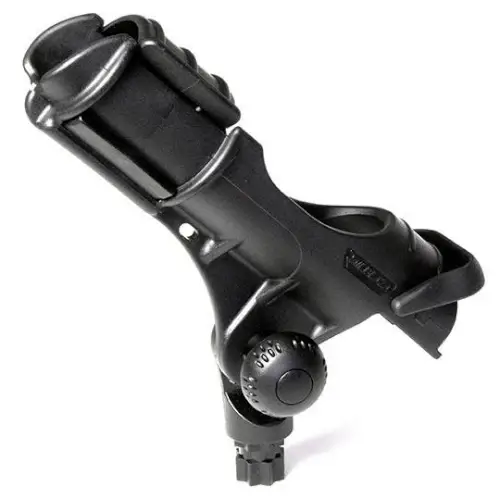Everything You Need to Know About the Hobie Passport Kayak Series

Of all of the Pedal-powered kayaks made by Hobie, the Passport series are by far the least expensive. For that reason alone they are also among the most popular in the range as they do represent excellent value for money. Just because they are significantly less expensive, however, that doesn’t mean they are cheap. By that we mean they are not cheaply made and are not more likely to let you down on the water. Hobie has very high standards when it comes to quality and design and the Passports are no different.
That said, Hobie have employed an alternative construction method* and have also cut a few corners in order to get the weight and cost down. Don’t panic – the corners that were cut make a lot of sense for many users (sometimes less is more), but it does pay to know what the differences are so you know what you’re getting into. Before expanding on that, lets first discuss the differences between the two Passport models on offer – the Passport 10.5 and the Passport 12.
*Update: in July 2022, Hobie announced the impending release of new rotomolded versions of the Passport kayaks, thoughtfully titled ‘Passport 10.5 R & Passport 12 R‘ respectively. Based on what we know at the time of writing, the specs are identical, making it safe to assume performance will be much the same as well. Currently we’re not yet sure what Australian pricing will come in at, nor do we have an ETA on their arrival into the country.

Size, Weight and Carrying Capacity
The Passport 10.5 is the shorter on the two kayaks, coming in at 10.5′, or 3.2 metres. It is also the lighter of the two models, weighing in at 29.5kg (hull only). For anyone looking for the lightest and smallest offering this makes the 10.5 an obvious choice. Similar in design to the Sport model (now superseded) with similar shape and characteristics, the 10.5 Passport does offer more stability and weight carrying capacity than it’s predecessor.
With near identical width and length and featuring a very similar hull design, it’s easy to see that the Passport 12 is heavily inspired by pre 2019 model Outbacks and as such offers very similar performance. The Passport 12 is a foot and a half longer than the 10.5, which makes it a better option for taller and or heavier users due to increased levels of buoyancy. The higher volume of the 12′ model means that the kayak will sit better in the water for heavier payloads.
While both models are extremely stable for what they are, the weight carrying capacity differs somewhat, with the 10.5 offering up to 147kg capacity, the 12 is capable of carrying 180kg. It’s not really recommended to carry payloads creeping precariously close to capacity limits so in our opinion, a user of over 100kg is likely to have a better ride on the 12′ model. The longer waterline length provides marginally better speed, most noticeable in choppier conditions.

Thermoformed Hull Construction Method
Most other Hobie kayaks are manufactured with a rotomolded construction process, built like Easter eggs with powdered Polyethylene plastic injected into a heated rotisserie mold, then cooled and set to produce a seamless hull. The Passport models are instead built with a thermoformed construction, with the hull consisting of 2 Polyethylene sheets (top and bottom) that are pressed together and heat welded. Both techniques produce great results although rotomolding is the more labor intensive approach, which partly explains the price difference.
Quality is certainly comparable and out-of the packet consistency is probably even better (we see a higher degree of variances of consistency with rotomolded hulls). The thermoformed hulls seem to feel a bit more rigid than the their rotomolded counterparts and seemingly better scuff resistance as well. Passport hulls truly are stormtroopers, almost always coming out of the packet exactly the same.
Hobie were thoughtful enough to add a keel guard to the stern (one of the highest points of wear) and for anyone that might want to add extra reinforcement to the bow, BerleyPro make ‘BumperBro’ bow guards that are available for both models.
Features & Inclusions
There are some differences between the features offered on Passport models as compared with various other models in the range, as well as some notable differences between the features on the 10.5 and 12 Passports as well. Lets cover that first
When you compare some key differences between the 10.5 and 12′ models it becomes evident that the 12′ model is generally better suited for fishing, due to greater storage room and utility, with provision to add even more if required. There is more storage space in the rear well, with the widest point being 49cm and 69 cm length in the rear of the 10.5. The 12′ model rear well is 55cm at it the widest point and 83 cm long. So clearly more gear can be stored behind the seat, which some anglers would appreciate.
The 12 model also has a flat round section under the bungee cords at the bow, which some users have used to install an 8″ hatch. Customers who go to this length will most often install a rectangular hatch in place of the round hatch (which has been moved to the bow) and this does add more storage options. Either side of the 12′ model centre hatch position are EVA deck pads, which are there to add traction for standing. These are not present on the 10.5 model.

The 12 model also has a couple of bungee cords attached to the inner deck intended for securing items such as flat tackle boxes, and here there are also clearly defined sections well suited for installation of rubber mesh pockets or BerleyPro Sidebros and Jig Buckets. Both models feature built in gear tracks, which make adding accessories such as rod holders and fish finder units a simple process.
Perhaps the most notable difference that kayak anglers might want to know about is that the Passport 12 has a transducer scupper, which makes installing a fish finder a simpler process, and also offers better results. While this isn’t included in the 10.5 model, there are rudder mounted workarounds for this.
Identical to both models is the aluminium paddle, deluxe raised seat (which is nice and light and suitably comfortable) and a manually operated rudder. The rudder on the Passport kayaks is quite different to everything else that Hobie make, offering both pros and cons that are worthy of mention.
Unlike the rudder systems on all other Hobie kayaks, the Passport system does not rely on pull cords to lift the rudder up and down, and relies on the user to perform this manually by hand. This may sound like a negative, but it’s much less of an issue than you may imagine. When launching it’s generally no problem to pull the kayak into the water so it has a bit of depth for deployment, and when coming in to land the simplest way to address it is to hop out of the kayak when you are in shallow water and then just lift the rudder by hand. The rudder blade is spring loaded, so should you hit something when out on the water the blade will just fold up, and then spring back when you have cleared the obstruction.
The Passport rudder system is simple and effective, with smooth and reliable steering control. Unlike all other models that Hobie make Passports do not rely on left and right rudder line cords and is instead operated with a single fibreglass rod. We’re positive this will never break and is extremely easy to make adjustments to if required. The rudder assembly attaches to the stern with a rudder pin that will break if the rudder is knocked hard enough, which is precisely what a rudder pin is supposed to do in that instance (it’s not a bad idea to carry a spare rudder pin).
Update: Hobie now offer an upgraded rudder system as an optional extra for Passport models. The Passport Rudder XL is larger, offers tighter turning capability and provides an up and down pull cord to deploy and retract the rudder blade. Here is a demonstration / installation guide on the XL Rudder

Passport models are supplied with the new Kick-Up Glide Tech (GT) MirageDrive, which is updated from the previous GT system. Not only do the fins retract upon impact, this drives uses Hobie’s latest fin and sprocket design which is significantly more efficient than the earlier types. With more surface area at the business end of the fin and the absence of an outhaul block reducing friction, these are smoother to pedal and offer greater propulsion per-pedal stroke.
Unlike the MD180 drives provided on most other models, the GT drive does not pedal backwards (unless you put the drive in back to front), so although the MD180 drive has the edge in features, the GT drive has the edge in performance and dependability. Reverse pedaling is a nice feature and may well be more useful to some users than others (especially kayak anglers fishing skinny waters) but the GT drive does have it’s advantages over the MD180 system. Primary among the pros of the GT drive is that it is a simpler design with less components and it’s built tough. Best of all, the GT Kick Up drives offers butter-smooth pedaling performance – better than any other drive they have ever made. Anyone covering long distances on the water may very well appreciate this.
Passport kayaks are compatible with the MD180 drive and it is possible to buy one with an MD180 drive (from premium Hobie dealers).
Optional extras
There’s a myriad of ways you can go about accessorizing a Passport kayak, so much so that we’re only going to go into the most obvious ones here. Before going into more detail on that, first we should mention that the best advice we can give you (especially if you are new to the world of Hobie kayak fishing) is to not over-accessorize the kayak before you get started. It often works out better to just start with the essentials and then start adding gear when you’re certain you need it. Once you’ve spent just a little bit of time on the water it becomes pretty easy to figure out exactly what you want and where and how to install it.

That said, it’s almost certain that you’re going to want a wheel cart to go along with your new kayak. If you’re not going to be contending with beach sand you may very well get away with Hobie’s standard wheel cart, but the heavy duty wheel cart is always a better option. Most of our customers are going to be wheeling the yak over beach sand, however and for this we would always recommend the Trax 2 wheel cart.

Kayak covers are a popular add-on for many of our customers, especially those who are storing their kayaks outside, doing a lot of travelling, or otherwise just want to keep out dust and critters. We have two covers available for these models, both of which are great quality and an even better price. Our small kayak deck cover is a great fit on the Passport 10.5 and our medium kayak cover is well suited for the 12′ model. Both covers are available to buy online here
As previously mentioned, a lot of our customers who accessorize a Passport 12 will move the standard round hatch to the bow and then add a vertical rectangular hatch to the centre. If you find yourself doing this you’re probably also going to look into a Hobie rectangular bucket, or otherwise the BerleyPro Bucket Bro. If you’re going with the Passport 10.5, or sticking with the round hatch in a 12, then you might want to add a gear bucket, or otherwise a deep gear bucket for a bit more storage utility.

If you’re going to add a rod holder or two, you’re probably going to want to employ the gear tracks for this purpose. Most of the fishing rod holders that we sell can be used on track mounts. The most popular rod holder we sell is the Railblaza Rod Holder 2, and if you decide to roll with this one you’re going to want to use Railblaza Tracloader mounts for these.
If you’re keen to add a sunshade to your passport this can be easily achieved with a Hobie Bimini, which are compatible with both Passport models.

More parts and accessories made exclusively for the Hobie Passport series
